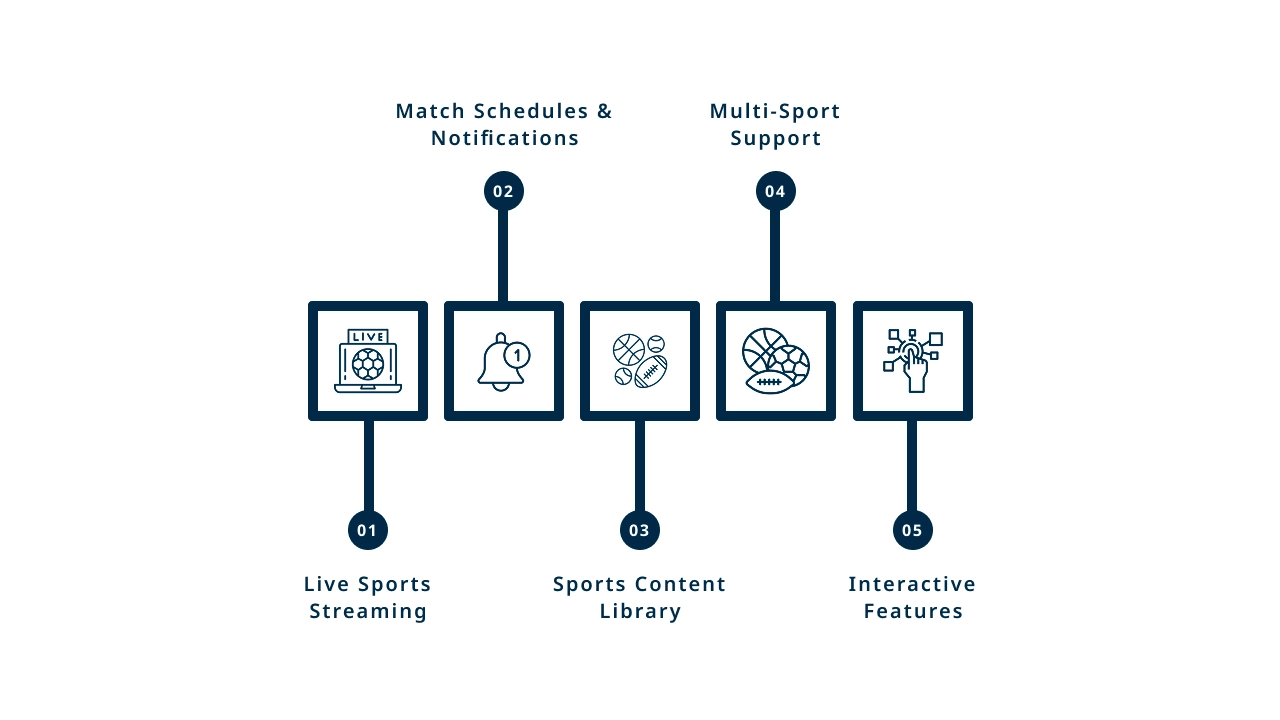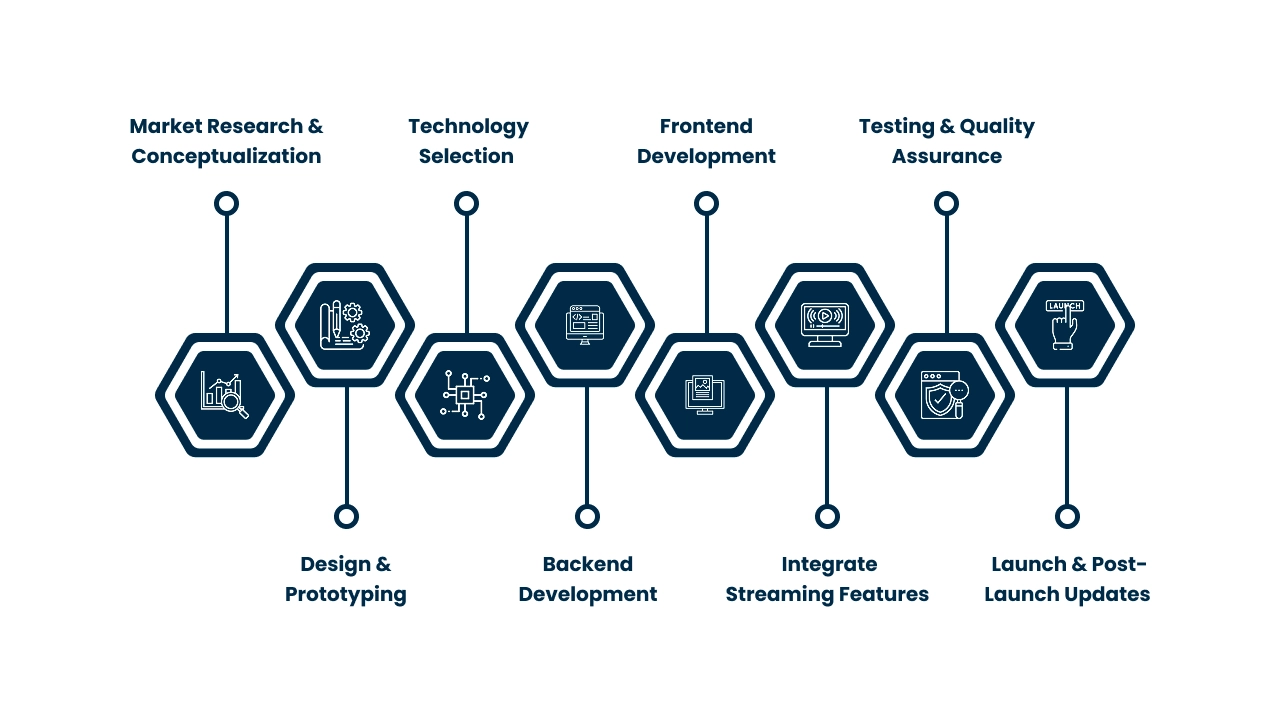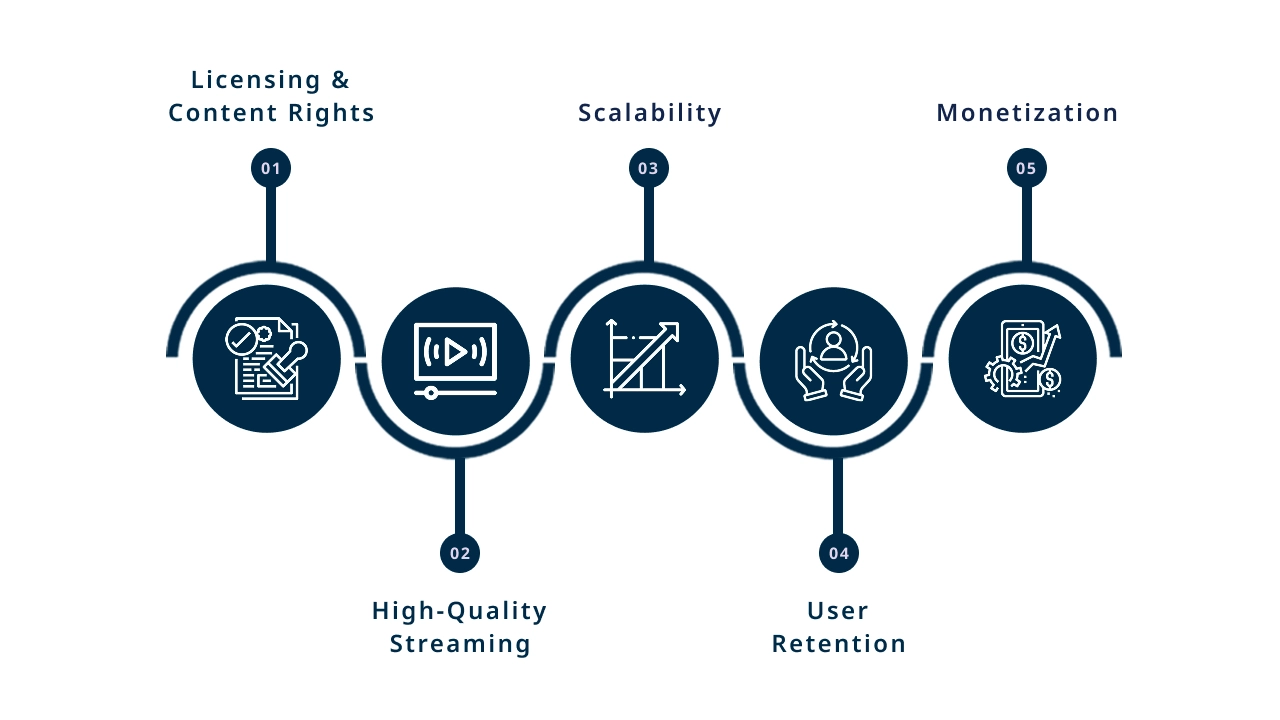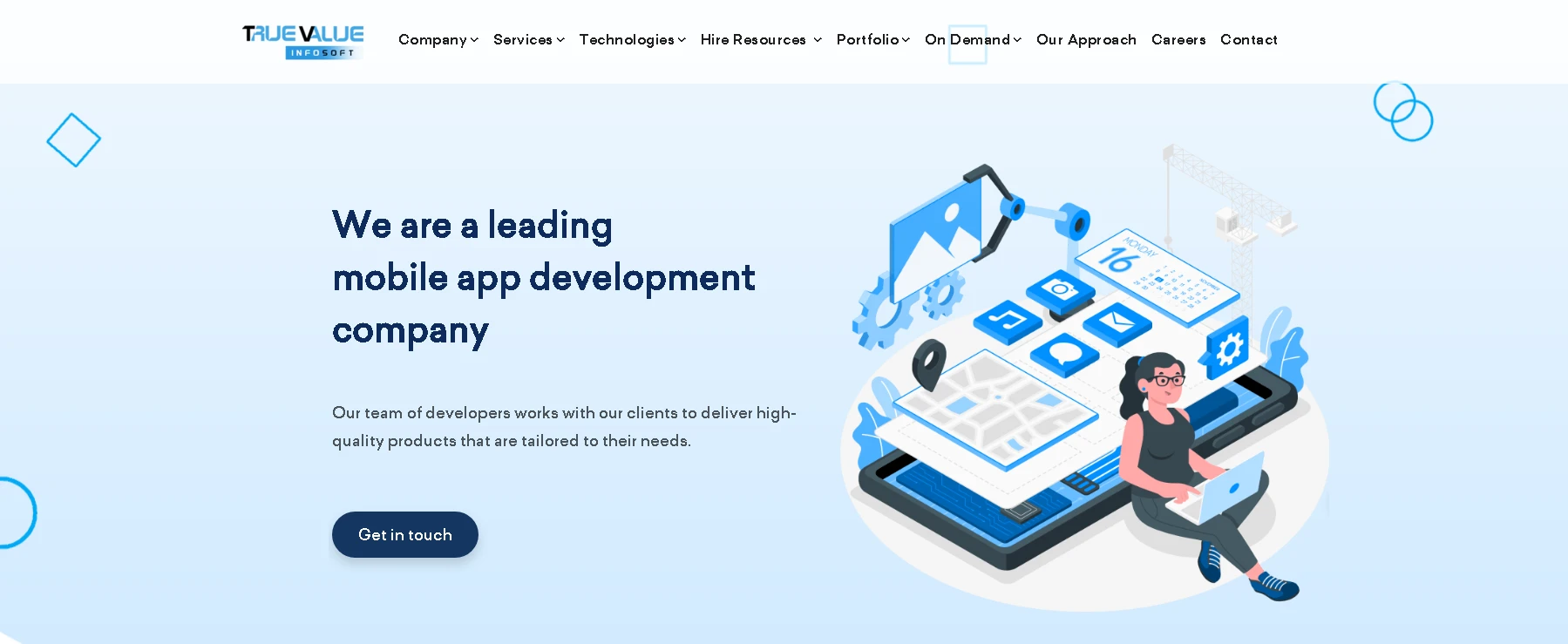Introduction
Have you ever wondered how to build a sports streaming app that stands out in the crowded market of 2025? With the rise of digital content consumption, sports streaming platforms have become a crucial part of how fans engage with their favorite sports. If you want to launch your own app like Stortsurge, offering seamless streaming experiences for fans, you've come to the right place.
As the best app development company in India, True Value Infosoft specializes in building cutting-edge, high-performance sports streaming applications tailored to your business goals. In this blog, we will take you step-by-step through the process of developing a sports streaming app like Stortsurge, including the features, tech stack, and best practices you should follow.
Building a sports streaming app in 2025 means dealing with multiple challenges such as high-quality video streaming, user engagement, live match updates, and an intuitive interface. But with the right tools, technology, and strategy, you can create an app that provides real-time coverage, exclusive content, and a personalized experience to your users. Let’s dive deep into how to successfully build your sports streaming app from scratch.
What is a Sports Streaming App?
A sports streaming app allows users to watch live sports events, highlights, and on-demand videos through their smartphones, tablets, or smart TVs. These apps provide real-time coverage of games, updates, and replays for various sports like football, cricket, basketball, tennis, and more. Some apps even offer exclusive content, behind-the-scenes footage, interviews, and expert commentary to enhance the viewer experience.
Apps like Stortsurge revolutionize how sports fans interact with their favorite teams and athletes by offering personalized content and instant access to game broadcasts. These platforms typically provide subscription-based models, in-app purchases, and ad revenue as their main sources of income.
For those planning to build their own sports streaming app, it's essential to understand the critical features, tech stack, and workflow that makes these platforms successful.
Why Build a Sports Streaming App in 2025?
With the increasing consumption of digital content, especially in the sports sector, building a sports streaming app in 2025 has never been more timely. Here’s why you should consider launching your own sports streaming platform:
- Increasing Demand for Live Sports: Fans are moving away from traditional cable TV in favor of on-demand digital content, especially for live sports.
- High Revenue Potential: Subscription fees, in-app ads, and exclusive content provide multiple revenue streams.
- Fan Engagement: A well-designed app enhances user interaction with live match commentary, real-time updates, and personalized notifications.
- Global Reach: Digital streaming allows you to reach a global audience, offering local and international sports coverage.
- Technology Advancements: With cloud services, AI, and improved video compression technologies, building a sports streaming app in 2025 is more feasible than ever.
Given the huge market potential and increased engagement, now is the perfect time to enter the sports streaming space.
Features of a Sports Streaming App Like Stortsurge

To create an app like Stortsurge, your platform should include the following key features:
1. Live Sports Streaming
Allow users to stream live sports events in real-time. The app should support HD and 4K streaming for a high-quality viewing experience.
2. Match Schedules & Notifications
Provide live match schedules, event countdowns, and notifications for users based on their preferences.
3. Sports Content Library
Offer on-demand access to past matches, highlights, interviews, and exclusive content.
4. Multi-Sport Support
Include coverage for multiple sports, such as football, cricket, basketball, and tennis, to cater to a diverse audience.
5. Interactive Features
Live commentary, social media integration, and live chat options enhance fan engagement during events.
The Tech Stack for Building a Sports Streaming App
A powerful sports streaming app requires the right set of technologies. Here’s a suggested tech stack for building a sports streaming app like Stortsurge:
- Frontend (Mobile/Web):
- iOS (Swift), Android (Kotlin), or Cross-platform (React Native, Flutter)
- Web (React.js, Angular)
- Backend:
- Node.js or Python (Django)
- GoLang for real-time functionalities
- Streaming Protocols:
- HLS (HTTP Live Streaming)
- RTMP (Real-Time Messaging Protocol)
- MPEG-DASH
- Cloud & Hosting:
- AWS, Google Cloud, or Microsoft Azure for cloud storage and computing
- Content Delivery Networks (CDNs) for fast delivery of video content
- Database:
- MySQL, PostgreSQL, or MongoDB for managing user data and content
- Redis or Memcached for caching data
- Video Encoding/Transcoding:
- FFmpeg for video transcoding
- AWS Media Services or Cloudflare for streaming solutions
- Payment Gateway:
- Stripe, PayPal, or Razorpay for processing subscriptions and payments
Steps to Build a Sports Streaming App Like Stortsurge

Step 1: Market Research & Conceptualization
Research the sports streaming market to understand user preferences, competitors, and market gaps. Define your niche—whether it’s general sports or a specific category (e.g., football or cricket).
Step 2: Design & Prototyping
Design the user interface and create wireframes. Focus on a simple, intuitive interface that ensures easy navigation. Develop a prototype to visualize how the app will look and function.
Step 3: Technology Selection
Choose the appropriate tech stack based on your requirements. Consider factors like scalability, streaming quality, and user engagement.
Step 4: Backend Development
Set up a robust backend that supports real-time streaming, user management, and payment systems.
Step 5: Frontend Development
Develop the frontend for both mobile and web platforms, ensuring responsiveness and compatibility with various devices.
Step 6: Integrate Streaming Features
Incorporate live streaming capabilities, including video quality management, adaptive streaming, and playback controls.
Step 7: Testing & Quality Assurance
Test the app on different devices and networks to ensure smooth performance, minimal buffering, and reliable streaming.
Step 8: Launch & Post-launch Updates
Launch the app and gather user feedback. Roll out periodic updates to fix bugs, improve features, and add new content.
The Cost to Build a Sports Streaming App
The cost of building a sports streaming app can vary widely based on the complexity of features, the tech stack, and development time. Here's an estimated breakdown:
| Feature | Estimated Cost (USD) |
|---|---|
| Basic App (MVP) | $10,000 – $30,000 |
| Medium Complexity App | $30,000 – $75,000 |
| High-End Sports App | $75,000 – $150,000+ |
Factors that influence the cost include:
- App platform (iOS, Android, Web)
- Live streaming functionality
- Cloud services and video hosting
- Payment gateway integrations
- User interface/experience design
Challenges in Building a Sports Streaming App

While building a sports streaming app offers great potential, it comes with its own set of challenges:
- Licensing & Content Rights: Securing broadcasting rights can be expensive and difficult.
- High-Quality Streaming: Ensuring low-latency and uninterrupted streaming is a technical challenge.
- Scalability: Handling large volumes of traffic, especially during live events.
- User Retention: Keeping users engaged with regular content and personalized experiences.
- Monetization: Deciding on the right business model, such as subscriptions, ads, or pay-per-view.
Key Monetization Strategies for Sports Streaming Apps
Here are some proven monetization strategies:
- Subscription Model: Offer monthly or yearly subscriptions for exclusive content.
- Pay-Per-View: Charge users for specific events or matches.
- In-App Advertising: Display ads for free users to generate revenue.
- Sponsorship & Partnerships: Partner with sports brands or sponsors to promote their content.
- Freemium Model: Provide free content with an option for premium subscriptions.
How to Integrate Live Streaming into Your Sports App
To ensure a smooth and reliable live-streaming experience, consider the following:
- Low Latency Streaming: Implement HLS or RTMP for real-time video delivery.
- Adaptive Streaming: Use MPEG-DASH or HLS to adjust video quality based on user internet speed.
- CDN (Content Delivery Network): Utilize CDNs to deliver high-quality video to users globally.
User Engagement Features for Sports Streaming Apps
- Live Match Chat: Allow fans to chat during live games.
- Social Media Sharing: Let users share their favorite moments on social media platforms.
- Push Notifications: Send alerts about game schedules, live scores, and match highlights.
- Polls & Quizzes: Engage users with fun and interactive polls or quizzes related to sports.
Why Choose True Value Infosoft for Sports Streaming App Development?

At True Value Infosoft, we specialize in developing high-quality, scalable, and user-friendly sports streaming apps. With expertise in cutting-edge technologies, we help you create apps that deliver superior streaming performance, engage users effectively, and generate revenue. Our team’s deep understanding of the sports industry ensures that your app meets the demands of modern sports fans.
Conclusion
Building a sports streaming app like Stortsurge in 2025 requires a combination of the right technology, features, and monetization strategies. By carefully planning and executing your app development process, you can create a platform that delivers high-quality content and offers a seamless viewing experience for sports fans around the world.
FAQs
The development time can range from 4-6 months for a basic version, and up to 12+ months for more complex features.
Prioritize live streaming, real-time match updates, personalized content, and multi-device support.
You can use subscription models, pay-per-view, ads, sponsorships, or a freemium approach.
You’ll need technologies like HLS/RTMP for streaming, cloud services for hosting, and a frontend stack (React Native, Swift, Kotlin).
The cost depends on features and complexity, ranging from $10,000 for basic versions to $150,000+ for advanced versions.





